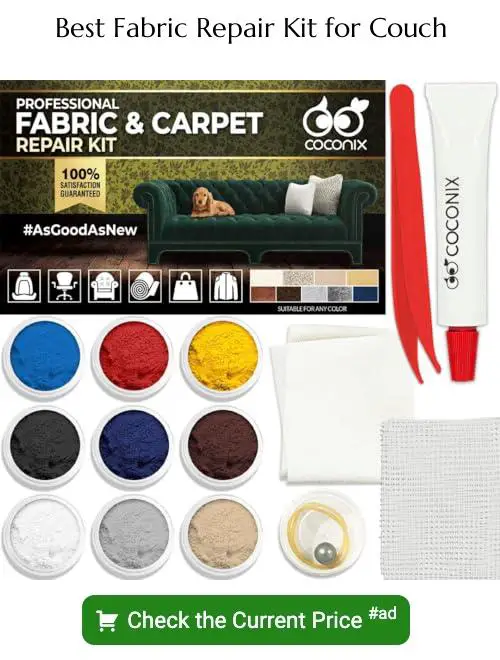Last updated on
Discover the simple steps to effectively repair a tear in your couch fabric, bringing life back to your favorite piece of furniture.
Your couch is the centerpiece of your living room, and it’s where you spend most of your downtime. It’s a place where you relax, unwind and enjoy the company of family and friends.
But what happens when your beloved couch gets a tear in its fabric? It can be frustrating to see such an eyesore on such an important piece of furniture. Fortunately, there are ways to repair tears in couch fabric without having to replace the entire thing.
In this article, we’ll show you how to repair a tear in your couch fabric so that it looks as good as new!
Table of Contents
Identifying the Type of Fabric

The first step in repairing a tear in your couch fabric is to identify the type of fabric. This is important because different fabrics require different repair techniques and materials.
To determine the type of fabric, check for any tags or labels on your couch that indicate its material composition. If there are no tags, you can try to identify it by touch and appearance.
For instance, if the texture feels rough and coarse, it may be made from natural fibers such as wool or cotton. On the other hand, if it feels smooth and silky to touch with a shiny surface finish then chances are high that it’s synthetic like polyester or nylon.
Assessing the Extent of Damage
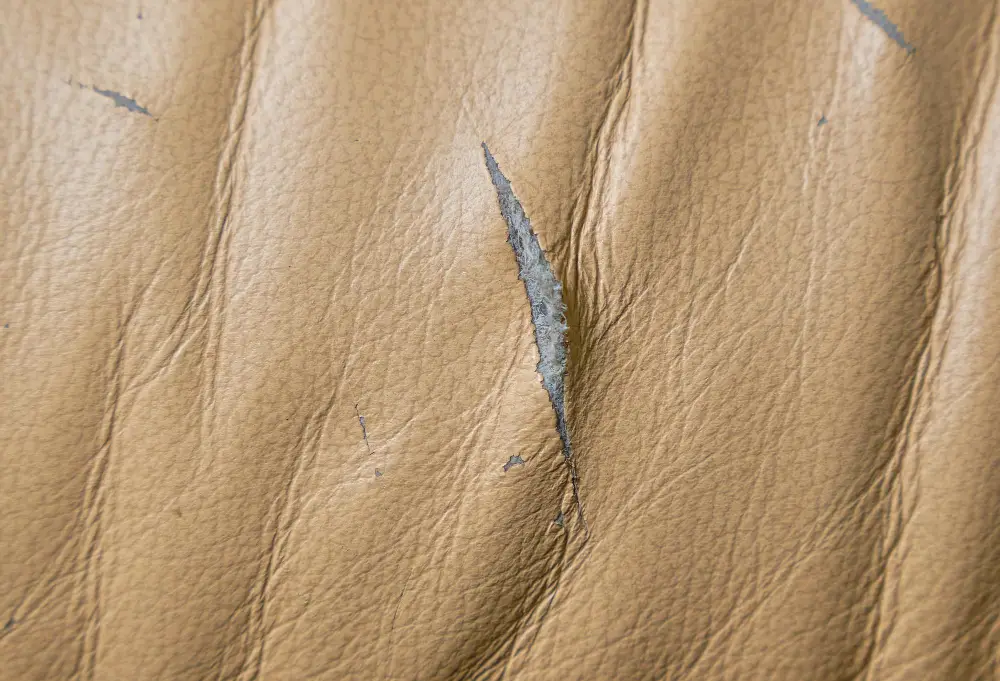
This will help you determine whether it’s a repair that can be done at home or if it requires professional assistance.
Start by examining the tear closely and determining its size and location. If it’s a small tear in an inconspicuous area, such as under an armrest or cushion, then repairing it yourself may be possible with some basic sewing skills.
However, if the tear is large or in a highly visible area like on top of one of your sofa cushions where everyone sits frequently – then seeking professional upholstery services might be necessary for optimal results.
It’s important to note that attempting repairs beyond your skill level could lead to further damage which would require more costly repairs down-the-line.
Gathering the Required Materials
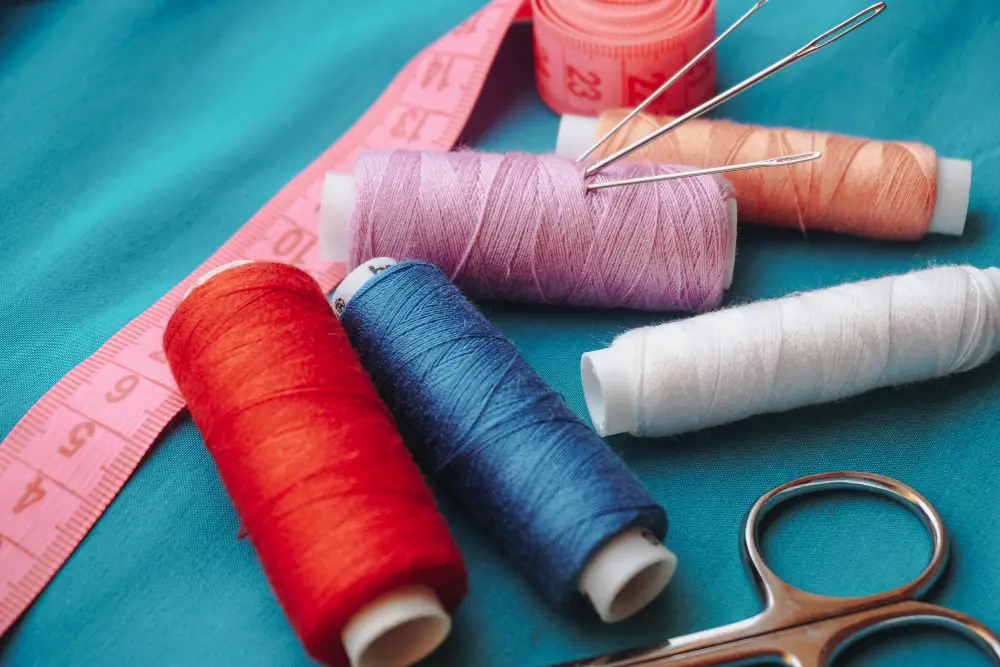
You don’t want to start a repair job only to realize halfway through that you’re missing an essential tool or material. So, before beginning any repairs, make sure you have everything on hand.
The required materials will depend on the size and location of the tear in your couch fabric. However, some basic items are needed for most repairs:
- Needle
- Thread (matching color)
- Scissors
- Measuring tape/ruler
- Iron-on patches (optional)
- Fabric glue (optional)
If there is a large tear in your sofa fabric or if it requires more extensive work than just sewing up a small hole, then additional tools may be necessary such as upholstery needles and pliers.
Choosing the Right Thread Color

Choosing a matching thread color is essential to ensure that your repair job blends in seamlessly with the rest of your sofa. If you’re unsure about which shade of thread to use, take a small piece of fabric from an inconspicuous area on your couch and bring it with you when purchasing new threads.
This will help match colors more accurately.
If there isn’t an exact match available, opt for a slightly darker shade rather than lighter as this will blend in better than lighter shades that can stand out like sore thumbs! Remember also that different fabrics may require different types or thicknesses of threads so be sure to check what type is best suited for yours before making any purchases.
Preparing the Sofa for Repair
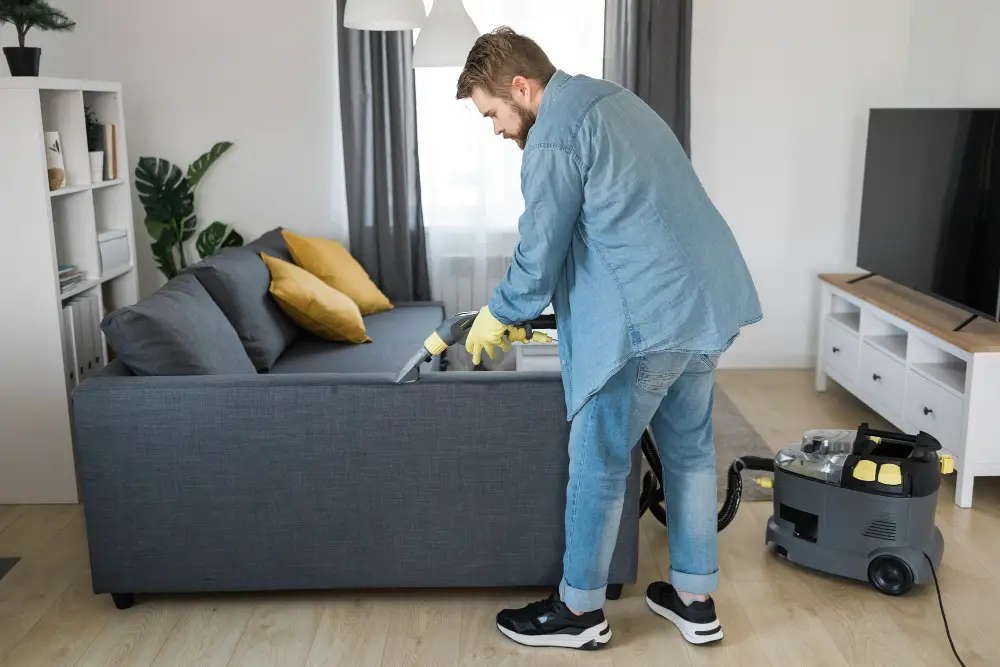
This will ensure that you have a clean and stable surface to work on, which is essential for achieving a successful repair.
Firstly, remove any loose threads or debris from around the torn area using scissors or tweezers. Next, vacuum the entire couch thoroughly to remove any dust and dirt that may interfere with your repair process.
If there are any buttons or zippers on your sofa cushions near the damaged area, make sure they are unfastened before proceeding with repairs. You don’t want them getting in your way while working!
If possible flip over larger furniture pieces like sofas so that you can access both sides of it easily during repairs.
Measuring and Ironing

Measuring is important because it helps ensure that your repair job will be seamless. Use a measuring tape to determine the length and width of the tear, then add an extra inch on all sides for seam allowance.
Next, use an iron to smooth out any wrinkles or creases in the surrounding area. This will make sewing much easier later on.
Be sure not to overheat or burn your fabric by using low heat settings.
Measuring and ironing may seem like small steps in repairing a tear in couch fabric but they are crucial for achieving professional-looking results.
Preparing the Torn Area

This step is crucial in ensuring that your repair job looks seamless and lasts a long time. Start by trimming any loose threads or frayed edges around the tear with scissors.
Be careful not to cut into any surrounding fabric as this can make the tear worse.
Next, use sandpaper or a nail file to gently roughen up the surface of both sides of the torn area. This will help create a better bond between your patch material and sofa fabric when you apply glue or adhesive later on.
If there are any small holes near your tear, consider using an awl tool (or even just a toothpick) to push some fibers from surrounding areas into these holes so they blend in more seamlessly with their surroundings.
Techniques for Sewing Tears
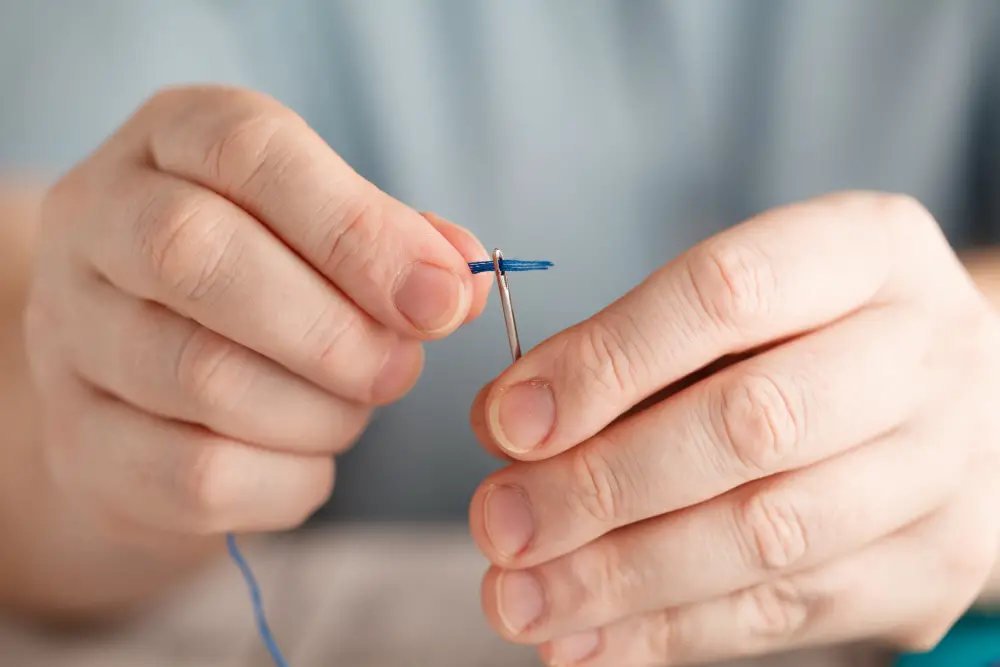
There are different techniques for sewing tears depending on the type of fabric and extent of damage. For small tears, a simple whip stitch can be used to close up the tear.
This involves threading a needle with matching thread and stitching through both sides of the tear in an over-and-under motion until it is closed.
For larger or more complex tears, you may need to use a patch or insert new fabric altogether. A patch can be made from scrap material that matches your couch’s upholstery color and texture; simply cut out a piece slightly larger than the damaged area and sew it onto your couch using either hand-sewing or machine-stitching techniques.
If inserting new fabric is necessary, carefully measure out how much extra material will be needed before cutting into any existing pieces on your sofa – this ensures that everything lines up correctly once reassembled.
Using Fabric Glue for Small Tears

Fabric glue can be found at most craft stores or online retailers and is an affordable option for repairing minor tears. To use it, start by cleaning the torn area with a damp cloth to remove any dirt or debris that could interfere with adhesion.
Next, apply a small amount of fabric glue along the edges of the tear using a toothpick or cotton swab. Be careful not to overdo it; too much adhesive can cause discoloration on some fabrics.
Once you’ve applied enough glue, press down firmly on both sides of the tear until they stick together. Hold them in place for several minutes until they dry completely.
While this method works well for smaller tears, keep in mind that larger rips will require more extensive repairs such as sewing or patching techniques mentioned earlier.
Applying Iron-on Patches

Iron-on patches are a quick and easy way to repair tears without having to sew them up. To apply an iron-on patch, start by cutting it into a shape that matches the torn area of your couch fabric.
Then place the patch over the tear with its adhesive side down and cover it with a thin cloth or towel.
Next, set your iron on low heat and press it firmly onto the covered area for about 30 seconds at a time until you feel that both fabrics have bonded together completely. Be sure not to move or slide around while pressing as this may cause wrinkles on either surface.
Replacing Damaged Sofa Cushion Covers
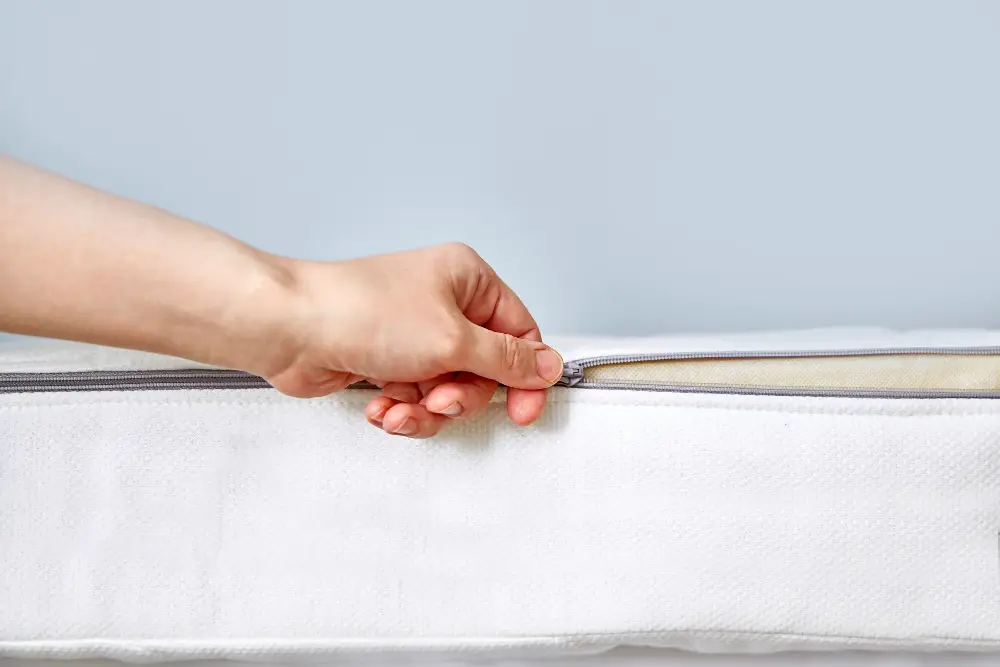
Replacing damaged sofa cushion covers can be an easy and cost-effective solution that will give your couch a fresh new look. First, remove the old cover from the cushion by unzipping or cutting it off carefully.
Then measure the dimensions of your cushion and purchase a replacement cover that fits those measurements.
When choosing a new sofa cushion cover, make sure to select one made from durable material that matches or complements your existing decor. You can find replacement covers at furniture stores or online retailers.
Once you have purchased the right size and style of replacement cushions for your couch, simply slip them over each individual foam insert before zipping up any closures if applicable.
Ensuring Color Matching
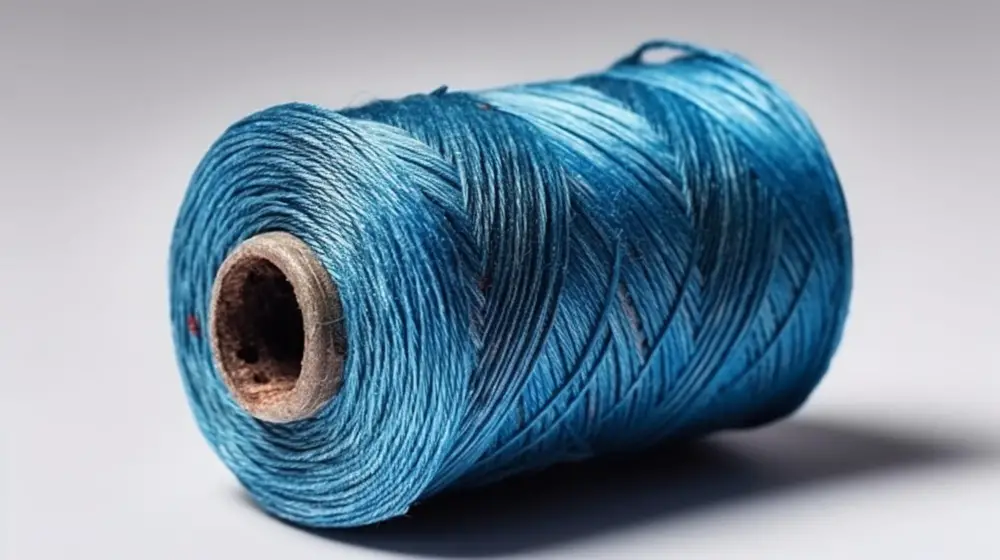
This can be tricky, especially if you have an older or unique piece of furniture. To ensure color matching, start by identifying the exact shade and texture of your couch fabric.
You can do this by taking a small sample from an inconspicuous area and bringing it to a local upholstery store for assistance.
Once you have identified the right shade and texture, choose thread or patches that match as closely as possible. If necessary, mix different colors together until you achieve an accurate match.
It’s also essential to consider lighting when assessing color matching accuracy since natural light may make colors appear differently than artificial light sources such as lamps or overhead lights.
Drying and Testing the Repair

This will ensure that the repair has set properly and will not come apart easily. Depending on what type of adhesive or thread you used for your repair, drying times may vary.
After allowing sufficient time for drying, test out your repaired area by sitting on it and applying pressure with a gentle tug. If there are any signs of weakness or tearing in the repaired area, then additional repairs may be necessary.
It’s always best to take extra care when repairing tears in couch fabric as they can be prone to further damage if not handled correctly.
Professional Upholstery Repair Options
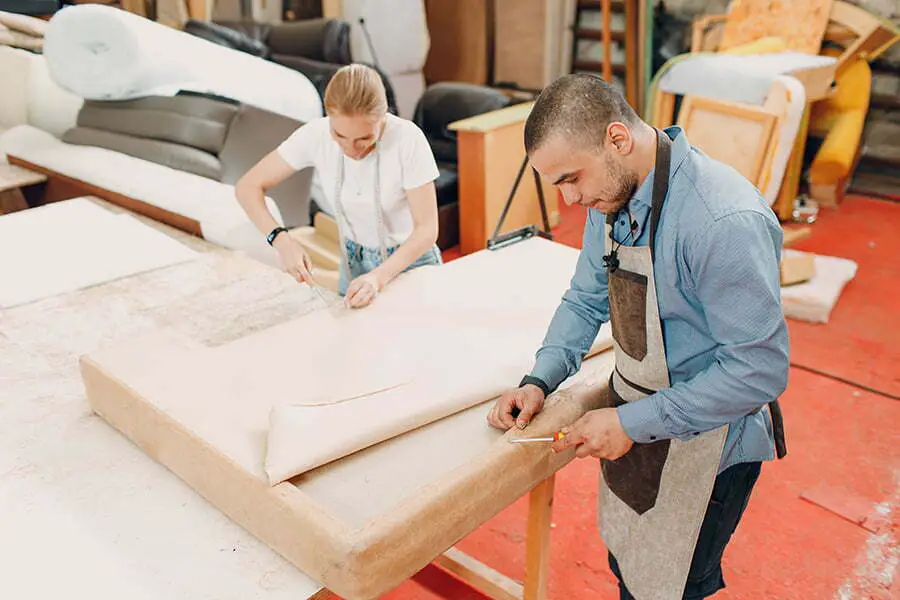
Professional upholstery repair services can provide high-quality repairs that will make your couch look as good as new. They have access to specialized tools and materials that are not readily available for DIY repairs.
When choosing a professional upholstery repair service, do some research first. Look for reviews online and ask friends or family members who they recommend.
Make sure the company has experience repairing tears in furniture fabric specifically.
Professional services can also offer additional benefits such as color matching and ensuring the repaired area blends seamlessly with the rest of your sofa’s fabric. While this option may cost more than doing it yourself, it could save you time and frustration while providing long-lasting results.
Caring for Repaired Fabric
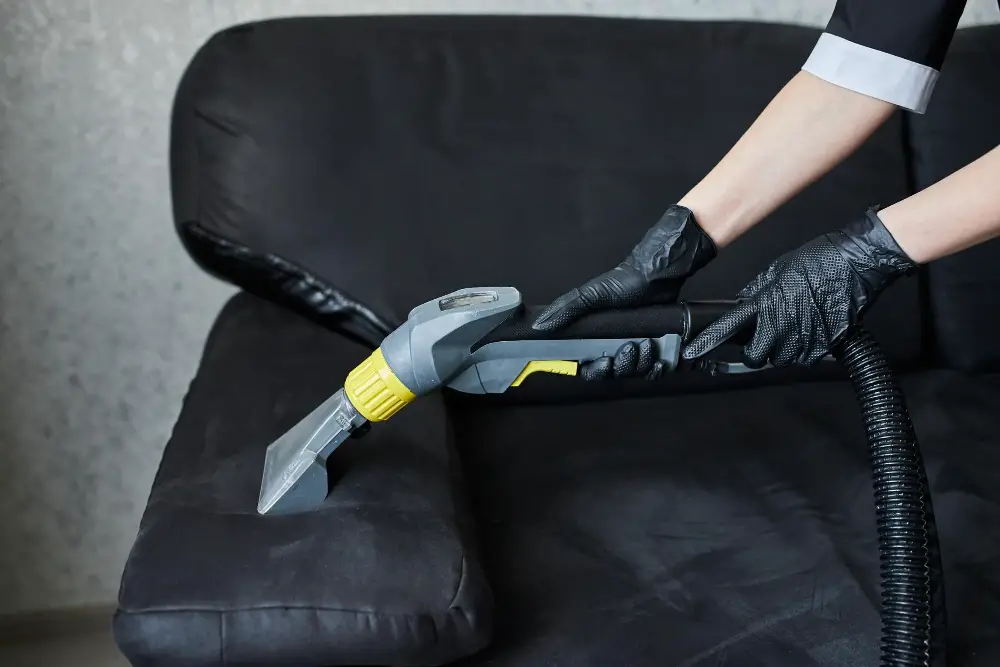
Caring for the repaired area will help ensure that it lasts as long as possible and looks great. One way to do this is by avoiding placing sharp objects or heavy items on the repaired area, which could cause further damage.
Another tip is to avoid exposing your couch fabric to direct sunlight for extended periods of time. This can cause fading and discoloration over time, making any repairs more noticeable.
Regular cleaning is also essential in maintaining a well-repaired sofa. Vacuuming regularly with an upholstery attachment can help remove dust and debris from both the surface of your sofa and within its fibers.
Consider using a protective spray designed specifically for upholstery fabrics after repairing tears on your couch fabric. These sprays create an invisible barrier that helps repel spills and stains while keeping dirt at bay between cleanings.
Prevention and Maintenance Tips

One of the best ways to do this is by regularly maintaining your sofa. Vacuuming or brushing off any dirt or debris from the surface can help prevent wear and tear on the fabric.
Another way to protect your couch is by using slipcovers or throws, especially if you have pets who like to scratch at furniture. Slipcovers are also a great option for changing up the look of your living room without having to buy a new sofa.
If you do notice any small tears starting, address them immediately before they become larger problems. Keep an eye out for loose threads and snip them off with scissors before they cause further damage.
Maintaining the Repaired Area
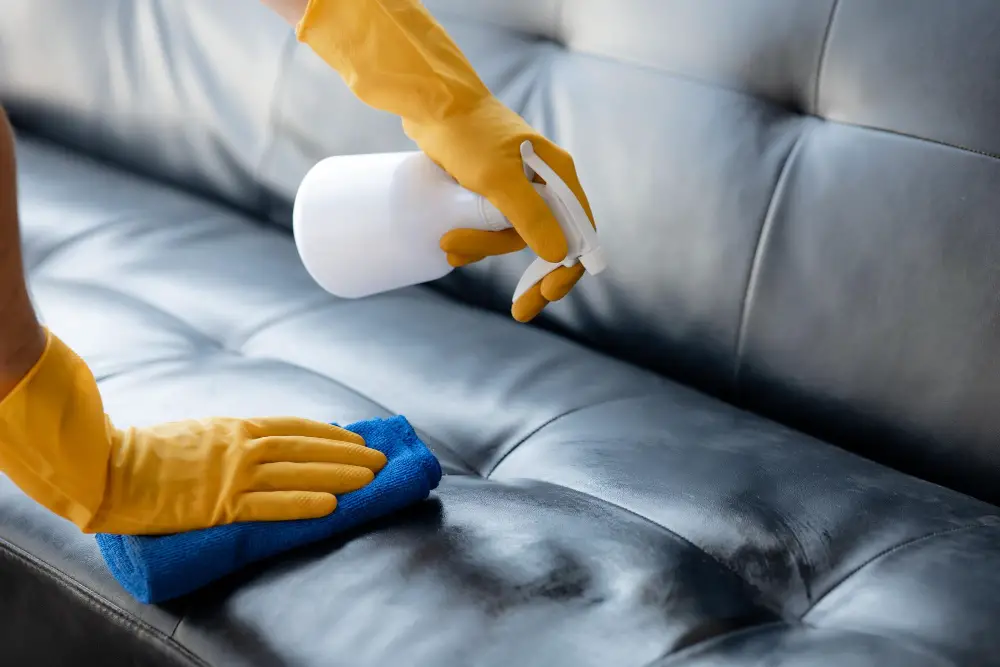
One of the best ways to do this is by avoiding placing sharp objects on or near your couch. This includes pets with sharp claws, as well as any jewelry or accessories that could snag and tear at the fabric.
Another way to maintain a repaired area is by regularly cleaning your sofa using appropriate methods and products recommended for its specific type of fabric. Avoid harsh chemicals and abrasive materials when cleaning, which can cause further damage.
If you notice any new tears forming in your sofa’s fabric after repair, address them immediately before they become larger problems. Small tears are much easier (and cheaper) to fix than large ones!
Preventing Future Tears

One of the best ways to do this is by regularly cleaning and maintaining your sofa. Vacuuming or brushing off any loose dirt or debris can help prevent friction against the fabric, which can cause tears over time.
Another way to protect your couch is by using slipcovers or throws as a protective layer on top of it. This will not only add an extra layer of protection but also give a new look and feel for your living room decor.
If you have pets at home, consider training them not to jump onto furniture as their claws could easily snag and tear delicate fabrics like silk or linen.
Lastly, be mindful when moving furniture around so that they don’t scrape against walls or other objects in close proximity which may lead into accidental damage. By following these simple tips for prevention and maintenance, you’ll be able to keep your sofa looking great for years without having another frustrating repair job on hand!
FAQ
Can a tear on a sofa be repaired?
Yes, a tear on a sofa can be repaired either through furniture shops or by sewing it yourself, depending on the size and location of the rip.
Can you repair fabric on a couch?
Yes, you can repair fabric on a couch by using iron-on or self-adhesive fabric patches that closely match the material’s color.
What methods can be used to fix a ripped couch fabric?
Methods to fix a ripped couch fabric include using fabric glue, sewing, using an iron-on patch, or applying upholstery tape.
Are there any DIY solutions for mending torn upholstery?
One DIY solution for mending torn upholstery is to use a curved needle and upholstery thread to sew the tear together.
In what ways can a professional upholsterer repair a damaged couch fabric?
A professional upholsterer can repair damaged couch fabric by patching, re-weaving, re-dying, or re-upholstering the affected areas.
